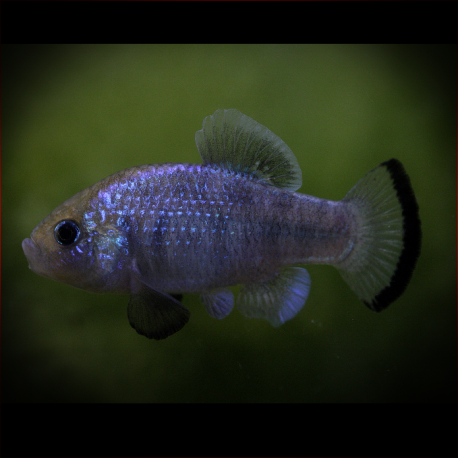More info
Datasheet
| Minimum Tank Size | 60 litres / 15.85 US gallons |
| Maximum Size | 6.0cm / 2.36inches |
| Temperature | 17°C / 62.60°F - 26°C / 78.80°F |
| Hardness | 10.03dgH / 179ppm - 20.00dgH / 357ppm |
| pH | 7.0-8.0 |
General Description
The Potosí Pupfish, scientifically classified as Cyprinodon Alvarezi, is a member of the Cyprinodontidae family under the order Cyprinodontiformes. With a maximum size reaching up to 6.0cm, this species, now only found in captivity, is crucial for preservation as it faced extinction in nature by the late 1990s. The name Cyprinodon is derived from the Ancient Greek words for "carp" and "tooth," while the species epithet alvarezi honors Josè Alvarez del Villar, a companion of the author who first collected this species in 1952.
Aquarium Setup
For optimal maintenance, it is recommended to keep the Potosí Pupfish alone, especially when breeding is the goal. However, a well-researched community setup can be considered if ample space is provided. Individual males necessitate room to establish territories, yet in most instances, two or more males can coexist in the same aquarium. The ideal tank environment includes plenty of cover for hiding, such as aquatic plants and wool mops, to create broken lines-of-sight. Utilizing filtration with air-powered, sponge-type units is preferred to safeguard eggs and fry. Lighting is nonessential but can be incorporated, while fostering the growth of filamentous algae is beneficial.
Behaviour
This pupfish species tends to thrive best when housed individually, aiding in successful breeding endeavors. However, if well-researched and adequately spacious, they can cohabit with suitable tankmates. Male Potosí Pupfish may require space to form territories but are generally tolerant of conspecifics in shared aquarium spaces.
Feeding and Diet
In terms of feeding, the Potosí Pupfish is an omnivorous species. Their diet should consist of a variety of foods, including high-quality flakes, pellets, live, and frozen options. Ensuring a diverse diet helps maintain their health and vibrancy in captivity.
Reproduction & Dimorphism
The breeding habits of the Potosí Pupfish can be best observed when kept alone in a suitable tank setup. Males may exhibit more vibrant coloration during the breeding season to attract females. It is crucial to provide adequate hiding spaces for fry and juveniles to ensure their survival.
Habitat and Distribution
Originally endemic to a solitary spring near El Potosí in Nuevo León state, northern Mexico, the Potosí Pupfish became extinct in its natural habitat in the late 1990s. The pond where they resided was clear with abundant aquatic vegetation, and it also housed other endemic species such as the Megupsilon aporus pupfish and the Cambarellus alvarezi crayfish. Unfortunately, human intervention led to the dessication of the pond, ultimately contributing to the extinction of the species in the wild.

